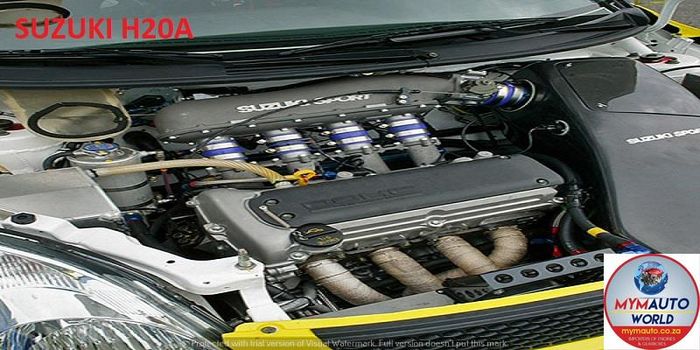Where to Find the most effective Opel Corsa Engine for Replacement
Where to Find the most effective Opel Corsa Engine for Replacement
Blog Article
Discovering the Inner Workings of a Compact Lorry's Engine System
As motorists, we often take for given the detailed procedures that happen within the boundaries of our car's engine system. In this expedition of a compact automobile's engine system, we will certainly decipher the internal operations of this mechanical harmony, shedding light on the mysteries that drive us ahead on our day-to-day journeys.
Burning Process Introduction
The burning process in a small car's engine system is an important mechanism that successfully transforms gas right into power to power the automobile. This procedure takes place within the combustion chamber of the engine, where fuel and air mix, ignite, and produce controlled explosions. The combustion process contains four main stages: intake, power, exhaust, and compression.
During the consumption stage, the piston relocates downward, drawing in a mixture of air and gas right into the combustion chamber. The next phase, compression, entails the piston moving upward, compressing the air-fuel mix to enhance its potency. Consequently, in the power stage, the ignition system ignites the compressed mix, resulting in a quick expansion of gases that compels the piston pull back. This descending activity produces the power required to drive the automobile. Lastly, in the exhaust phase, the burnt gases are removed from the combustion chamber via the exhaust shutoff, preparing the chamber for the next cycle. This cyclic combustion process is fundamental to the procedure of a compact car's engine system, making certain efficient energy conversion for propulsion.
Piston and Cyndrical Tube Communication

The piston's specific fit within the cylinder is crucial for preserving optimal compression and preventing energy loss throughout combustion. Tight clearances in between the piston and cyndrical tube walls make certain efficient securing, allowing the piston to move efficiently without allowing gases to leak past. Proper lubrication is also important to lower friction and wear in between these elements, enhancing longevity and performance.
Additionally, the style and products used in making the piston and cylinder effect engine effectiveness and resilience. Modern engines often use lightweight yet resilient products like aluminum alloys for pistons and cyndrical tube liners to lower inertia and enhance thermal performance. Generally, the unified interaction in between the piston and cyndrical tube is basic to the engine's functionality and overall performance.
Fuel Injection System Functionality
Fuel shot systems in compact car engines play an important duty in precisely delivering fuel to the burning chamber for efficient and controlled ignition. The fuel injection system operates by infusing gas into the combustion chamber at the ideal moment during the engine's operation (opel corsa engine). This accurate timing guarantees that the gas mixes evenly with the air for proper combustion, resulting in enhanced fuel efficiency and minimized exhausts
There are mostly two kinds of fuel shot systems utilized in portable car engines: port gas shot (PFI) and straight fuel injection (DFI) PFI systems inject fuel right into the intake port prior to the consumption valve, while DFI systems infuse fuel directly into the burning chamber. Both systems have their advantages, with DFI using far better fuel atomization and PFI providing a much more cost-effective option.
Understanding Engine Air Conditioning Systems
Efficient operation of a compact lorry's engine relies greatly on the efficiency of its cooling systems. Engine cooling is necessary to protect against overheating, which can result in serious damages and lowered performance. The cooling system in a small vehicle usually includes a number of parts collaborating to manage the engine temperature level. One vital part is the radiator, which utilizes coolant to absorb heat from the engine. As the warm coolant streams through the radiator, it launches heat right into the air, cooling down before returning to the engine. The water pump circulates the coolant with the engine and radiator, ensuring a constant flow to regulate temperature level. Additionally, the thermostat helps control the coolant flow to preserve optimum engine temperature level. Some cars additionally have cooling fans that activate when additional cooling is needed, such as during rush hour or heat. Comprehending these engine air conditioning devices is essential for preserving the efficiency and durability of a compact automobile's engine system.

Exhaust System Components Explained
The ideal performance of a portable automobile's engine cooling systems depends upon a complementary system recognized as the exhaust system, which consists of numerous important parts for making sure effective discharges and engine Home Page efficiency. The exhaust system includes parts such as the exhaust manifold, catalytic converter, muffler, and tailpipe. The exhaust manifold gathers exhaust gases from the engine's cylinders and routes them to the catalytic converter. The catalytic converter then transforms unsafe contaminants in the exhaust right into less dangerous discharges before releasing them via the muffler and tailpipe.
One crucial part of the exhaust system is the oxygen sensing unit, which checks the oxygen degrees in the exhaust gases to help manage gas intake and make sure ideal engine performance. opel corsa engine. Additionally, the resonator might exist in some exhaust systems to minimize sound degrees. Overall, the exhaust system plays a crucial duty in maintaining engine effectiveness, lowering hazardous exhausts, and guaranteeing a quieter driving experience for portable lorry proprietors

Verdict
In verdict, the small lorry's engine system is a complicated mix of parts that collaborate to facilitate the burning process, transform fuel into power, and get rid of waste gases. Comprehending the inner operations of the engine system, consisting of the piston and cylinder interaction, gas shot system, engine cooling mechanisms, and exhaust system elements, is critical for keeping optimum efficiency and efficiency of the automobile.
The burning process in a compact car's engine system is an essential system that successfully transforms fuel right into energy to power the vehicle.Gas my website injection systems in small car article engines play an essential function in precisely providing fuel to the combustion chamber for regulated and reliable ignition.There are mainly two types of gas injection systems used in small vehicle engines: port gas shot (PFI) and straight gas injection (DFI) Understanding these engine cooling mechanisms is vital for maintaining the efficiency and longevity of a compact lorry's engine system.
The optimal functioning of a compact car's engine cooling devices depends on a complementary system recognized as the exhaust system, which comprises numerous important elements for making sure effective discharges and engine efficiency.
Report this page